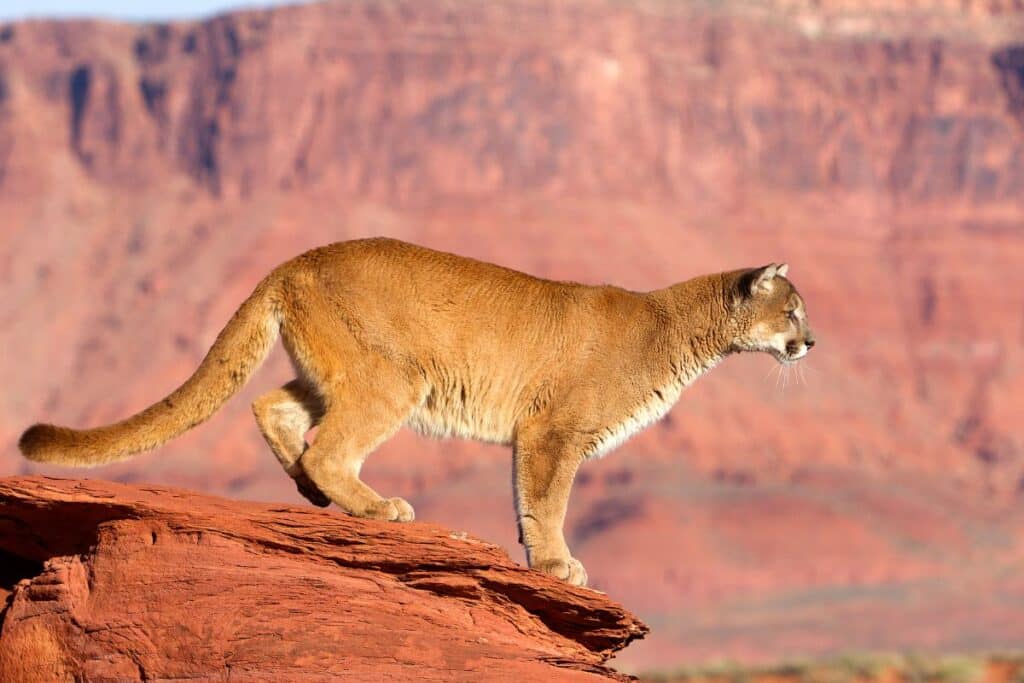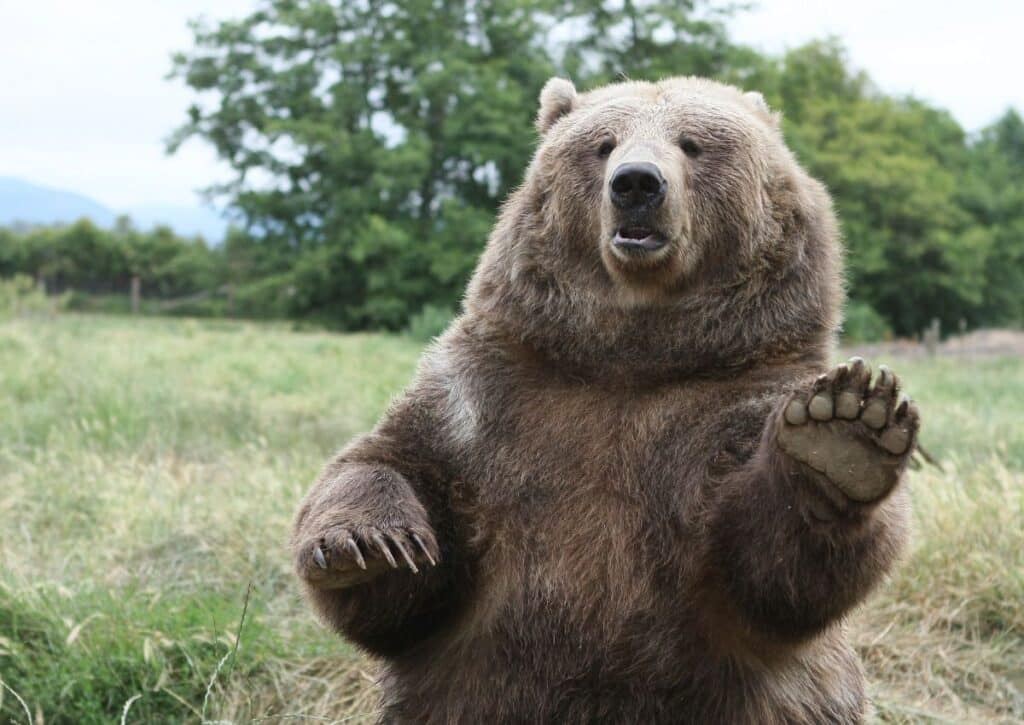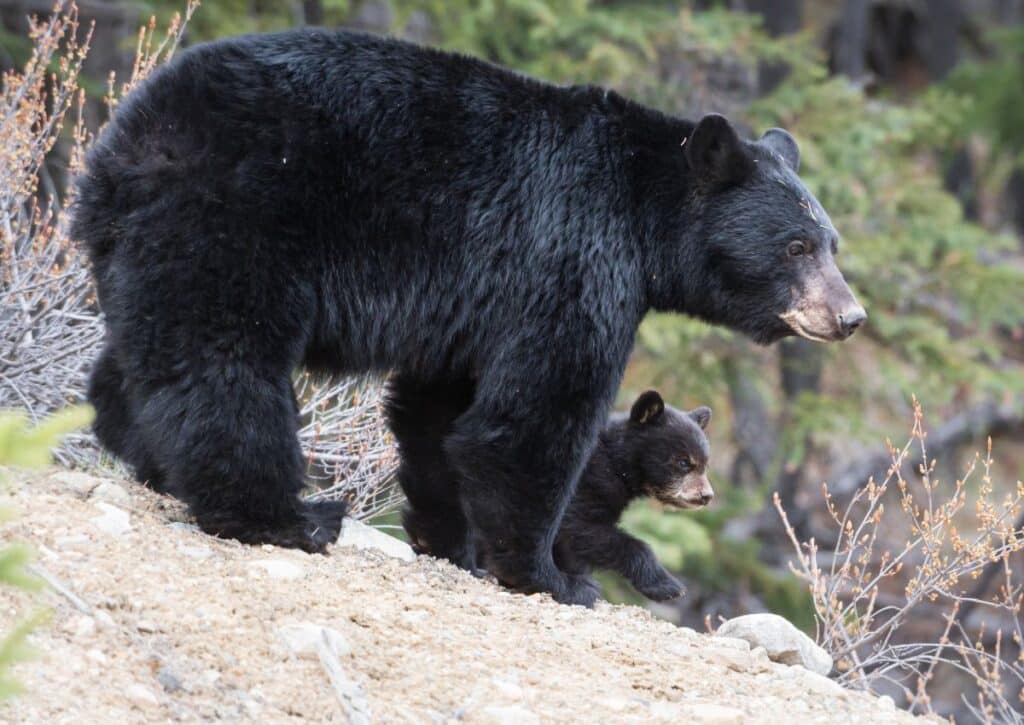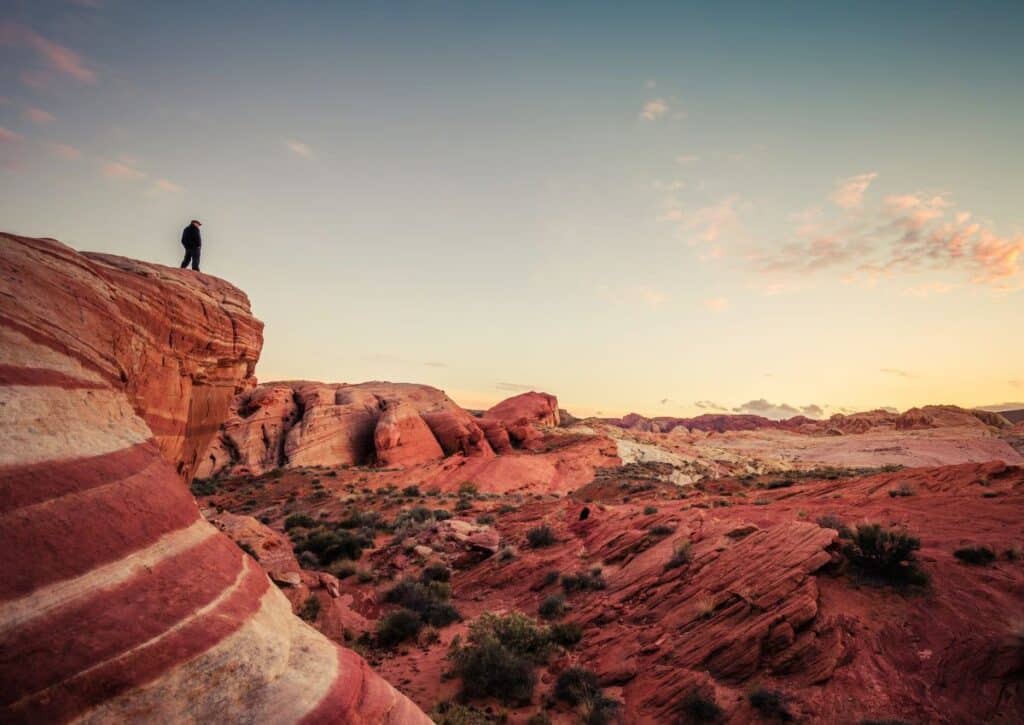Exploring the top predators of the Grand Canyon offers a thrilling glimpse into the untamed side of one of the world’s most spectacular natural wonders.
In this article, we deep dive into the lives of the canyon’s most fascinating inhabitants. From the elusive mountain lions to the soaring eagles, every twist in the trail brings a new story.
As you plan your next hike or camping trip, get ready to discover the predators that call the Grand Canyon home, learn about their role in this magnificent ecosystem, and unravel the mysteries of their survival in this rugged terrain.
Let’s uncover the secrets of these majestic creatures and their dynamic relationships within the Grand Canyon!
Top Predators of the Grand Canyon
The Grand Canyon is also a sanctuary for some of North America’s most fascinating predators.
These creatures, often elusive and always intriguing, play a vital role in the ecosystem. From the stealthy cougars to the soaring birds of prey, each predator has a story that enhances the wilderness experience for travelers.
Let’s delve into the lives of these top predators and discover their unique presence in the Grand Canyon.
Cougars/Mountain Lions
The Grand Canyon serves as a remarkable habitat for the elusive cougar, also known as the mountain lion. These majestic felines are master climbers and often inhabit the rocky and rugged terrains of the Canyon.
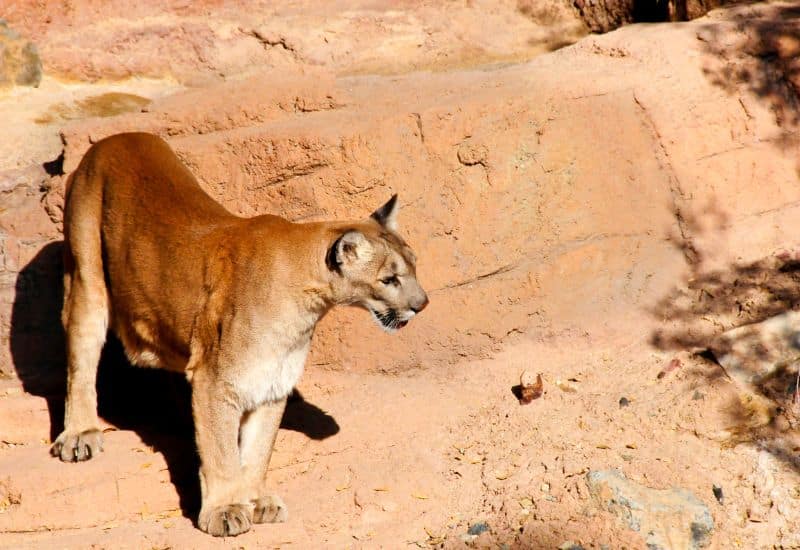
Their presence, though rarely seen, is a reminder of the wildness that still thrives in these parts.
Cougars play a crucial role as apex predators. They help control the population of deer and other herbivores, thus maintaining a healthy ecological balance. For the observant hiker, the occasional glimpse of a cougar or its tracks can be a thrilling addition to their Grand Canyon adventure.
Coyotes
Coyotes are the quintessential symbol of the American Southwest. These adaptable canines exhibit a greyish-brown coat and a distinctive howl that often echoes through the canyon walls at dusk.
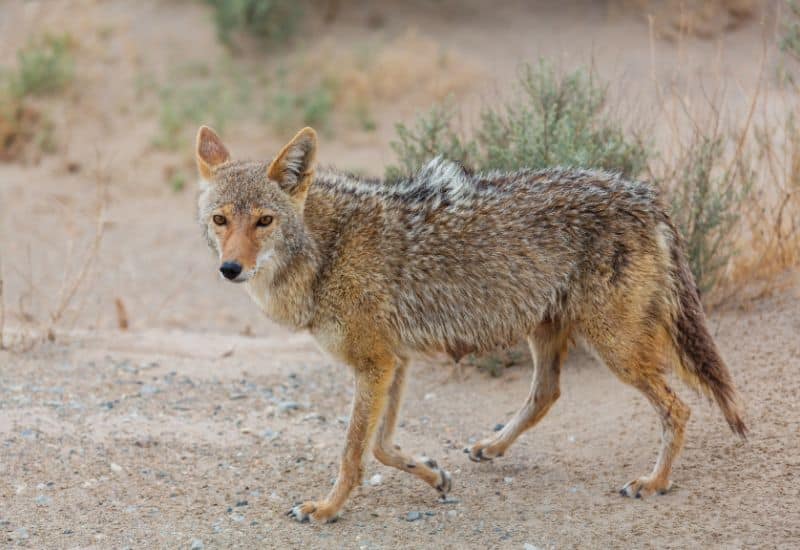
Travelers camping or hiking may catch sight of these animals as they forage or play in the twilight.
Coyotes are opportunistic predators and scavengers. They interact with a variety of species, from competing with bobcats and foxes to impacting the populations of smaller mammals and birds. Their adaptability to different environments makes them a common sight in the Grand Canyon.
Bobcats
Bobcats, with their spotted coat and tufted ears, are smaller than cougars but equally fascinating. They are more reclusive, making a sighting a rare treat for wildlife enthusiasts.

These felines are often found in the denser brush areas and along the river corridors of the Canyon.
Bobcats are skilled hunters, preying on a variety of small animals like rabbits, birds, and rodents. Their hunting skills are a demonstration of the Canyon’s rich biodiversity and the intricate food web that sustains this ecosystem.
Birds of Prey (Hawks, Eagles)
The Grand Canyon is home to an impressive array of birds of prey, including hawks and eagles. These birds, with their keen eyesight and powerful talons, reign supreme in the skies above the Canyon.
The sight of a soaring eagle or a diving hawk is a spectacular addition to any Grand Canyon trek.
Birds of prey are crucial for maintaining the ecological balance. They control populations of smaller animals and act as indicators of the environmental health of the area. Their presence adds an element of awe and a reminder of the wildness that defines the Grand Canyon.
Understanding the Predator-Prey Dynamics
The Grand Canyon is more than just a stunning spectacle of nature; it’s a living, breathing ecosystem where the drama of predator and prey unfolds daily.
This dynamic is a crucial force in the canyon, shaping the lives of all creatures within it. Predators, like cougars and eagles, aren’t just hunters; they’re caretakers of their environment, playing a key role in keeping the ecosystem balanced and healthy.
How Predators Maintain Ecological Balance?
Predators help control the population of herbivores, preventing overgrazing and preserving the vegetation that forms the backbone of the habitat. This balance is vital; it ensures that plant life thrives, supporting a diverse range of species.
In the Grand Canyon, the presence of predators like mountain lions ensures that deer populations remain at healthy levels, which in turn helps to maintain the structural integrity of the canyon’s flora. It’s a natural form of checks and balances that sustains the entire ecosystem.
Interactions Between Different Predator Species?
The Grand Canyon’s predator hierarchy is an intricate web of interactions. Larger predators like cougars often dominate, influencing the behavior and habitats of smaller predators such as bobcats and coyotes.
These interactions dictate territories, hunting times, and even prey choices. For instance, the elusive bobcat might opt for smaller prey and avoid areas frequented by the more dominant mountain lion.
This not only reduces conflicts but also diversifies the diet of different predators, ensuring no single prey species is overhunted.
The predator-prey relationship in the Grand Canyon is a captivating element of this natural wonder. For travelers, understanding this dynamic adds a rich layer of insight into every rustle in the brush or distant call echoing off the canyon walls.
It’s a reminder that this iconic landscape is a living ecosystem, where every creature plays a role in its survival and beauty.
Main Prey Species in the Grand Canyon
The Grand Canyon, renowned for its awe-inspiring landscapes, is also a hub for diverse wildlife, particularly a variety of prey species. These animals not only form the basis of the food chain but also contribute significantly to the ecological richness of the Canyon.
Understanding these species provides a glimpse into the complex and vibrant web of life that thrives in this unique environment.
Mule Deer
Mule deer are perhaps the most noticeable prey species in the Grand Canyon. Known for their large ears and black-tipped tails, they are often seen grazing in the meadows and along the river corridors.
These deer are vital to the ecosystem, serving as a primary food source for predators like mountain lions.
The presence of mule deer influences vegetation patterns and, in turn, the distribution of other wildlife. They play a crucial role in shaping the physical and biological landscape of the Canyon.
Desert Bighorn Sheep
Desert bighorn sheep are iconic to the Grand Canyon’s rugged terrain. Adapted to the arid environment, they are often seen on steep, rocky cliffs where predators have difficulty reaching. Their agility and strength make them a challenging target for predators.
Bighorn sheep are key players in the Canyon’s ecology. They help in seed dispersal and vegetation maintenance, contributing to the ecological diversity of the area.
Small Mammals (Rodents, Rabbits)
The Grand Canyon is home to a wide array of small mammals, including various rodents and rabbits. These creatures are often the unsung heroes of the ecosystem, providing a consistent food source for smaller predators like bobcats, foxes, and birds of prey.
These small mammals play a significant role in soil aeration and seed dispersion. Their burrowing and foraging habits contribute to soil health and plant growth, which in turn supports a larger array of wildlife.
Birds and Reptiles
Birds and reptiles, though often overlooked, are a crucial part of the Grand Canyon’s prey base. This includes a variety of songbirds, waterfowl, lizards, and snakes.
These species add to the Canyon’s biodiversity, serving as prey for both avian and terrestrial predators. They also play roles in pest control and pollination, further underscoring their importance in the ecosystem.
The Grand Canyon’s prey species are as integral to its environment as the dramatic cliffs and winding rivers that define its landscape. For visitors, understanding these animals enriches the experience, offering a more profound appreciation of the natural world and its intricate connections.
Also Read
Animals in Grand Canyon National Park Seen on Our Hikes!
Things to do in Grand Canyon National Park This Winter!
Tours in the Grand Canyon National Park That Involve Helicopters!
FAQ on Grand Canyon’s Predators
1. Are there bears in the Grand Canyon?
While the Grand Canyon is not a primary habitat for bears, there have been occasional sightings, mainly of the black bear. These sightings are rare and typically occur in the North Rim and more forested areas. Historically, bears were more prevalent, but due to changes in habitat and human activity, their numbers have decreased significantly in the region.
2. Do mountain lions live in the Grand Canyon?
Mountain lions, also known as cougars, are indeed present in the Grand Canyon. These elusive predators prefer the canyon’s rugged and remote areas, making sightings rare but possible. Their presence is essential for the ecological balance, as they help control the population of deer and other herbivores.
3. Are there tigers in the Grand Canyon?
There are no tigers in the Grand Canyon. Tigers are native to Asia and do not naturally occur in North America. Any notion of tigers in the Grand Canyon is a misconception and not supported by any verified wildlife studies or observations.
4. Are there jaguars in the Grand Canyon?
Jaguars historically roamed the southern United States, including areas close to the Grand Canyon. However, their current status in the region is virtually nonexistent due to habitat loss and hunting. Conservation efforts are ongoing in nearby regions to help restore jaguar populations.
5. What other large predators can be found in the Grand Canyon?
Apart from mountain lions, the Grand Canyon is home to smaller predators like coyotes and bobcats. These animals play a vital role in the ecosystem by controlling the populations of smaller prey species.
6. What nocturnal predators can be found in the Grand Canyon?
The Grand Canyon hosts a variety of nocturnal predators, including owls, foxes, and ringtails. These creatures are active during the night and play a crucial role in the ecosystem by controlling rodent and insect populations.
7. How do predators in the Grand Canyon adapt to the extreme environment?
Predators in the Grand Canyon have adapted to the extreme environment through various means. For instance, mountain lions and bobcats have developed keen hunting skills suited to the rugged terrain, while birds of prey utilize thermal currents for efficient flying in the canyon’s vast expanse.
8. Are there any endangered predators in the Grand Canyon?
The Grand Canyon area does host some species that are considered endangered or threatened, such as the California condor, a large bird of prey. Conservation efforts are ongoing to protect these species and their habitats within the park.
9. What role do birds of prey play in the Grand Canyon ecosystem?
Birds of prey, such as hawks and eagles, play a significant role in the Grand Canyon’s ecosystem. They help maintain the balance by controlling populations of small mammals and reptiles, and their presence indicates the health of the ecological system.
10. Can visitors see predators during their trip to the Grand Canyon?
While sightings of large predators like mountain lions are rare, visitors might spot smaller predators like coyotes, bobcats, and a variety of birds of prey. The best chances for wildlife viewing are during the early morning or late evening hours.

